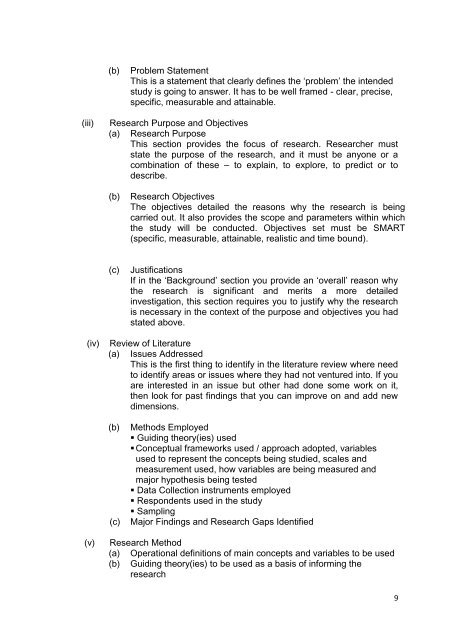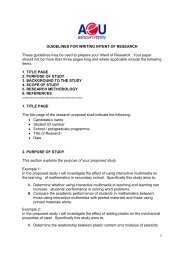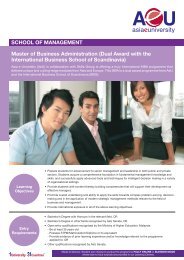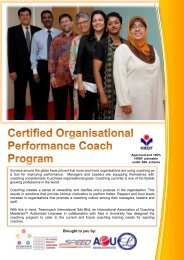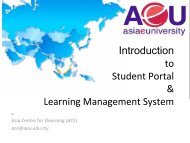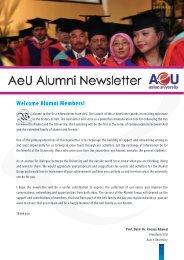GUIDELINES FOR THE THESIS / DISSERTATION WRITING - AeU
GUIDELINES FOR THE THESIS / DISSERTATION WRITING - AeU
GUIDELINES FOR THE THESIS / DISSERTATION WRITING - AeU
- No tags were found...
You also want an ePaper? Increase the reach of your titles
YUMPU automatically turns print PDFs into web optimized ePapers that Google loves.
(b)<br />
Problem Statement<br />
This is a statement that clearly defines the ‘problem’ the intended<br />
study is going to answer. It has to be well framed - clear, precise,<br />
specific, measurable and attainable.<br />
(iii)<br />
Research Purpose and Objectives<br />
(a) Research Purpose<br />
This section provides the focus of research. Researcher must<br />
state the purpose of the research, and it must be anyone or a<br />
combination of these – to explain, to explore, to predict or to<br />
describe.<br />
(b)<br />
Research Objectives<br />
The objectives detailed the reasons why the research is being<br />
carried out. It also provides the scope and parameters within which<br />
the study will be conducted. Objectives set must be SMART<br />
(specific, measurable, attainable, realistic and time bound).<br />
(c)<br />
Justifications<br />
If in the ‘Background’ section you provide an ‘overall’ reason why<br />
the research is significant and merits a more detailed<br />
investigation, this section requires you to justify why the research<br />
is necessary in the context of the purpose and objectives you had<br />
stated above.<br />
(iv)<br />
Review of Literature<br />
(a) Issues Addressed<br />
This is the first thing to identify in the literature review where need<br />
to identify areas or issues where they had not ventured into. If you<br />
are interested in an issue but other had done some work on it,<br />
then look for past findings that you can improve on and add new<br />
dimensions.<br />
(b)<br />
(c)<br />
Methods Employed<br />
• Guiding theory(ies) used<br />
• Conceptual frameworks used / approach adopted, variables<br />
used to represent the concepts being studied, scales and<br />
measurement used, how variables are being measured and<br />
major hypothesis being tested<br />
• Data Collection instruments employed<br />
• Respondents used in the study<br />
• Sampling<br />
Major Findings and Research Gaps Identified<br />
(v)<br />
Research Method<br />
(a) Operational definitions of main concepts and variables to be used<br />
(b) Guiding theory(ies) to be used as a basis of informing the<br />
research<br />
9


